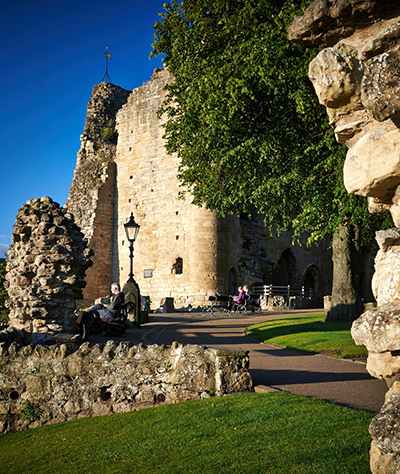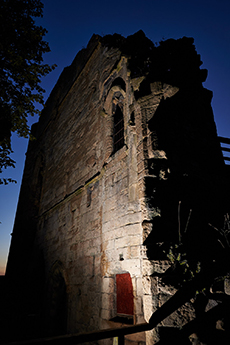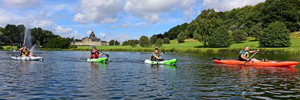Knaresborough Castle

A Castle has existed in Knaresborough for over 900 years, with significant periods of building & repair work as the castle was adapted to meet changing military requirements, fashions & historic events.
Timeline;
- Earliest castle built by the Normans.
- Evidence of Castle in Knaresborough in financial records, “Pipe Rolls”, dating from the reign of Henry I (1100-1135).
- 1170 - Constable of Castle, Hugh de Morville took refuge after murder of Thomas Becket.
- 1204 - King John (1199-1216) takes possession.
- Strategically important to Edward I (1272- 1307) in campaign against the Scots.
- Edward II (1307-1327) ordered construction of a new keep (the King’s Tower).
- 1317 - Castle sees action. Seized by supporters of the rebel Earl of Lancaster. Recaptured three months later.
- 1318 - Raiding Scots attacked Knaresborough. Castle not taken & remained the only point of refuge in the town.
- Queen Philippa, wife of King Edward III (1327- 1377) makes Knaresborough Castle into a royal residence.
- 1372 - Castle came into the possession of Queen Philippa’s youngest son John of Gaunt.
- 1399 - Richard II (1377-1399) confiscated the Castle.
- 1399 - Henry IV crowned & Knaresborough was a Royal Castle once again.
- 1600 - Final building work on the castle site completed when Sir Henry Slingsby adds upper storey to Courthouse building where local court cases were tried.
- Castle supported Royalist cause during Civil War. When hostilities began in August 1642, Sir Henry Slingsby moved quickly by putting in his own garrison to secure Knaresborough Castle for King Charles I (1625-1649).
- Following the Battle of Marston Moor on 2 July 1644 and the defeat of Royalist forces in the North, Knaresborough Castle came under siege. Castle surrendered in December, when cannon fire breached the walls.
- 1646 - Parliament orders destruction of many castles to prevent any future use by Royalist forces.
- 1648 - Demolition commenced & Castle was blown up. Courthouse & Keep retained following petition to Parliament.
- Stone, lead & timber sold off to raise money for the Treasury. Many town centre buildings built of ‘castle stone’.
- 18th century - Castle ruins popular with tourists & artists, including one of Britain’s most famous landscape painters, J Turner, who visited on his sketching tour of the north of England in 1797 & again in 1816.
- Late 19th century - Castle grounds landscaped to form pleasure gardens celebrating Queen Victoria’s Golden Jubilee.
- 20th century - archaeologists surveyed and excavated the castle site. Courthouse Dungeon converted into museum.


For those either currently visiting or intending to visit, we aim to be an excellent resource, with detailed listings for accommodation, places to eat and drink and things to see and do. We don't leave it there - whilst on holiday you could need a dentist, doctor, vet or optician. We offer details of where to find some of these too. In addition we provide weather information, transport options and even places you can recharge an electric vehicle.

The team behind Visiting North Yorkshire has 8 years experience promoting tourism in North Yorkshire, designing and maintaining dynamic websites, running successful and influential social media channels and producing & distributing quality tourism guides. In addition to this they have 25 years experience in the IT industry, giving them a complete sphere of expertise in online working - not only are they extremely proficient with "front end" technology that engages with the customer (websites, social media), but also the background infrastructure that supports and operates it. That expertise is available to draw on for Visiting North Yorkshire members, should they require technical advice or support.